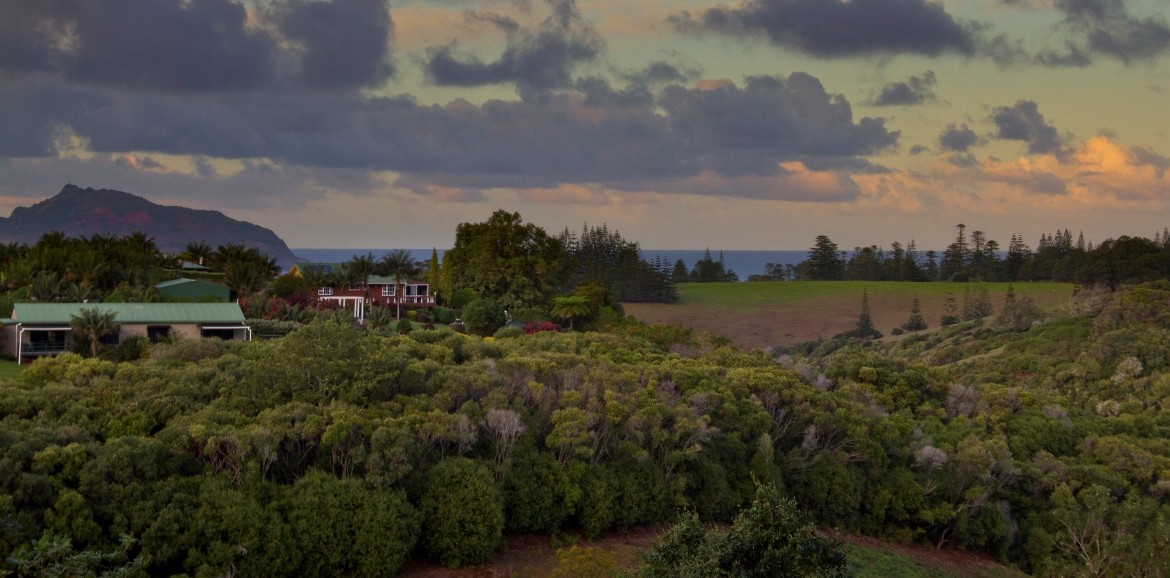If you look across the island from Castaway you can see Phillip Island, seven kilometres south of Norfolk. It is a fascinating part of Norfolk Island history.
Three million years ago Norfolk Island was many times the size it is today and consisted of one enormous, and very active volcano. When it finally erupted, the force must have been felt half way across the globe. Much of the outer island sank beneath the sea and all that was left was a five by eight kilometre fragment and a tinier, two by three kilometre speck. These were named many millennia later, Norfolk Island and Phillip Island respectively.
While Captain James Cook named Norfolk Island in 1774, after his patroness, the Duchess of Norfolk, Phillip Island was named by the first commandant of the initial convict settlement, Phillip Gidley King in honour of his commanding officer, Captain Arthur Phillip. In 1788, when King brought 22 soldiers and convicts to Norfolk to establish a British settlement, Phillip Island was heavily wooded and home to colonies of migratory sea birds and other native birds. However, the landscape changed dramatically following the introduction of pigs in 1793 and later, goats and rabbits between 1825 and 1830, to provide game for the bored officers of the convict settlements to hunt on their days off.
This, coupled with the passion for collecting, severely reduced the numbers of plant and bird species on Phillip and when the first colonial settlement was closed and the islands abandoned, between 1814 and 1825, the exotic mammals literally consumed the flora of Phillip Island. Not only several plant species, but also native reptiles and birds became either extinct or critically endangered. The island was stripped bare of foliage and then the topsoil was washed or blown away with nothing to hold it together. Since the eradication of the rabbit population – a marathon task that took decades – thanks to the efforts of volunteers and the National Park and Wildlife service, Phillip Island’s vegetation has slowly regenerated. The sparse covering meanwhile attracted the ground-nesting migratory seabirds that have made it their home, enriching the soil with their marine phosphate rich droppings. Thus, from a natural disaster, a natural recovery is beginning. The red ‘moonscape’ is slowly being covered with green, and no doubt within a few more decades, Norfolk will once again look across to a lush green Phillip Island.
Phillip has become an important aspect of a highly valued rite of passage for young Norfolk Islanders. Each spring, Norfolk families go to Phillip to collect the much-prized whale-bird eggs. Children count the years until they too can join the adults during this season. A weekend “aut Felap” is as good as a week away, according to the locals. There is a communal fisherman’s hut that is used for brief stays and the picnic table outside is covered in the carved names of each visitor.
Visitors to Norfolk Island are able to enjoy the unique landscape and natural environment of Phillip Island on escorted day treks taken by locals who have special permission to do so. A day on Phillip requires a fair level of fitness as access from the ocean is by a steep track and hand rope. Like Norfolk, the island is a patchwork of steep ridges and valleys with high cliffs above the water, providing spectacular vantage points.
On a global scale, Phillip Island is a very special place. Geologically young, it was shaped by the forces of evolution and natural selection followed by human fad and acquisitiveness and is now reviving, thanks to the regenerative powers of nature and the protection of its National Park status.

